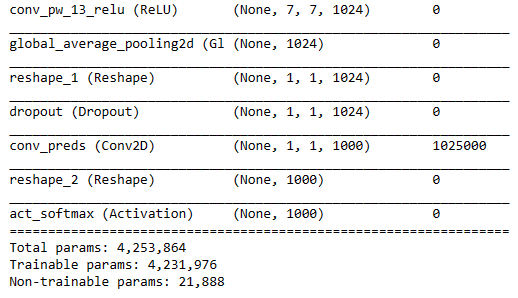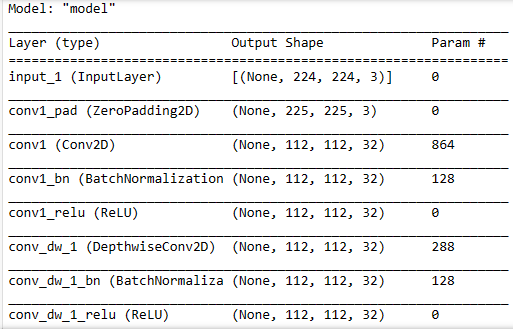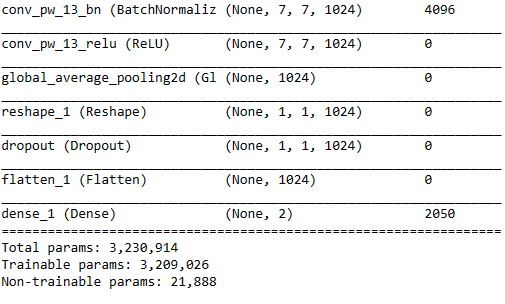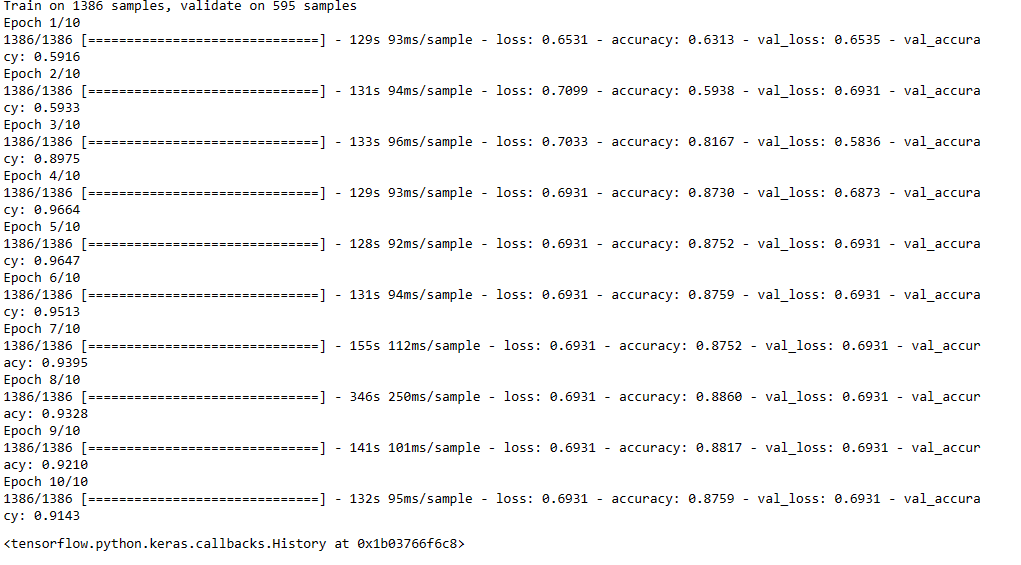Drowsiness Detection
text to be added
import tensorflow as tf ## pip install tensorflow-gpu
import cv2 ### pip install opencv-python
## pip install opencv-contrib-python fullpackage
import os
import matplotlib.pyplot as plt ## pip install matlplotlib
import numpy as np ## pip install numpy
img_array = cv2.imread("Test_Dataset/Closed_Eyes/s0001_00056_0_0_0_0_0_01.png", cv2.IMREAD_GRAYSCALE)
plt.imshow(img_array,cmap="gray")

img_array.shape
Datadirectory = "Test_Dataset/" ## training dataset
Classes = ["Closed_Eyes","Open_Eyes"] ## list of classes
for category in Classes:
path = os.path.join(Datadirectory, category) ## //
for img in os.listdir(path):
img_array = cv2.imread(os.path.join(path,img), cv2.IMREAD_GRAYSCALE)
backtorgb = cv2.cvtColor(img_array,cv2.COLOR_GRAY2RGB)
plt.imshow(img_array, cmap="gray")
plt.show()
break
break
img_size= 224
new_array= cv2.resize(backtorgb, (img_size,img_size))
plt.imshow(new_array, cmap="gray")
plt.show()
reading all the images and converting them into an array for data and labels¶
training_Data = []
def create_training_Data():
for category in Classes:
path = os.path.join(Datadirectory, category)
class_num = Classes.index(category) ## 0 1,
for img in os.listdir(path):
try:
img_array = cv2.imread(os.path.join(path,img), cv2.IMREAD_GRAYSCALE)
backtorgb = cv2.cvtColor(img_array,cv2.COLOR_GRAY2RGB)
new_array= cv2.resize(backtorgb, (img_size,img_size))
training_Data.append([new_array,class_num])
except Exception as e:
pass
create_training_Data()
print(len(training_Data))
print(len(training_Data))
print(len(training_Data))
1981
import random
random.shuffle(training_Data)
X = []
y = []
for features,label in training_Data:
X.append(features)
y.append(label)
X = np.array(X).reshape(-1, img_size, img_size, 3)
X.shape
(1981, 224, 224, 3)
# normalize the data
X= X/255.0; ## we are normalizing it
Y= np.array(y)
import pickle
pickle_out = open("X.pickle","wb")
pickle.dump(X, pickle_out)
pickle_out.close()
pickle_out = open("y.pickle","wb")
pickle.dump(y, pickle_out)
pickle_out.close()
pickle_in = open("X.pickle","rb")
X = pickle.load(pickle_in)
pickle_in = open("y.pickle","rb")
y = pickle.load(pickle_in)
deep learning model for training - Training Learning
import tensorflow as tf
from tensorflow import keras
from tensorflow.keras import layersmodel = tf.keras.applications.mobilenet.MobileNet()
model.summary()


Transfer Learning
base_input = model.layers[0].input ## input
base_output = model.layers[-4].outputPreviosly
Flat_layer= layers.Flatten()(base_output)
final_output = layers.Dense(1)(Flat_layer) ## one node (1/ 0)
final_ouput = layers.Activation('sigmoid')(final_output)After Correction
Flat_layer= layers.Flatten()(base_output)
final_output = layers.Dense(2)(Flat_layer) ## number of classes = number of FC nodes for classification layer
final_ouput = layers.Activation('softmax')(final_output)
new_model = keras.Model(inputs = base_input, outputs= final_output)
new_model.summary()

settings for binary classification (open / closed) Before Correction
new_model.compile(loss="binary_crossentropy", optimizer = "adam", metrics = ["accuracy"])After Correction
new_model.compile(loss="sparse_categorical_crossentropy", optimizer = "adam", metrics = ["accuracy"])
new_model.fit(X,Y, epochs = 10 ,validation_split = 0.3) ## training 
new_model.save('my_newmodel_drowsiness.h5')
new_model = tf.keras.models.load_model('my_newmodel_drowsiness.h5')checking the network for predictions
img_array = cv2.imread('s0001_00155_0_0_0_0_0_01.png', cv2.IMREAD_GRAYSCALE)
backtorgb = cv2.cvtColor(img_array,cv2.COLOR_GRAY2RGB)
new_array= cv2.resize(backtorgb, (img_size,img_size))
img_array = cv2.imread('s0012_08255_0_0_1_1_0_02.png', cv2.IMREAD_GRAYSCALE)
backtorgb = cv2.cvtColor(img_array,cv2.COLOR_GRAY2RGB)
new_array= cv2.resize(backtorgb, (img_size,img_size))
img_array = cv2.imread('s0012_08255_0_0_1_1_0_02.png', cv2.IMREAD_GRAYSCALE)
backtorgb = cv2.cvtColor(img_array,cv2.COLOR_GRAY2RGB)
new_array= cv2.resize(backtorgb, (img_size,img_size))
X_input.shape
(1, 224, 224, 3)
plt.imshow(new_array)
<matplotlib.image.AxesImage at 0x1b174d15c88>
X_input=X_input/255.0
prediction = new_model.predict(X_input)
import numpy as np
np.argmax(prediction)
1Lets check on unknown Images
img = cv2.imread('person_image.jpg')
plt.imshow(cv2.cvtColor(img, cv2.COLOR_BGR2RGB))
<matplotlib.image.AxesImage at 0x1b1886547c8>

faceCascade = cv2.CascadeClassifier(cv2.data.haarcascades + 'haarcascade_frontalface_default.xml')
eye_cascade = cv2.CascadeClassifier(cv2.data.haarcascades +'haarcascade_eye.xml')
gray = cv2.cvtColor(img, cv2.COLOR_BGR2GRAY)
eyes = eye_cascade.detectMultiScale(gray,1.1,4)
for(x, y, w, h) in eyes:
cv2.rectangle(img, (x, y), (x+w, y+h), (0, 255, 0), 2)
plt.imshow(cv2.cvtColor(img, cv2.COLOR_BGR2RGB))
<matplotlib.image.AxesImage at 0x1b1886c24c8>
cropping the Eye image
eye_cascade = cv2.CascadeClassifier(cv2.data.haarcascades +'haarcascade_eye.xml')
gray = cv2.cvtColor(img, cv2.COLOR_BGR2GRAY)
#print(faceCascade.empty())
eyes = eye_cascade.detectMultiScale(gray,1.1,4)
for x,y,w,h in eyes:
roi_gray = gray[y:y+h, x:x+w]
roi_color = img[y:y+h, x:x+w]
eyess = eye_cascade.detectMultiScale(roi_gray)
if len(eyess) == 0:
print("eyes are not detected")
else:
for (ex,ey,ew,eh) in eyess:
eyes_roi = roi_color[ey: ey+eh, ex:ex + ew]
eyes are not detected
plt.imshow(cv2.cvtColor(eyes_roi, cv2.COLOR_BGR2RGB))
<matplotlib.image.AxesImage at 0x1b18877a7c8>
eyes_roi.shape
(21, 21, 3)
final_image =cv2.resize(eyes_roi, (224,224))
final_image = np.expand_dims(final_image,axis =0) ## need fourth dimension
final_image=final_image/255.0
final_image.shape
(1, 224, 224, 3)
new_model.predict(final_image)
array([[-25.662868 , -6.1713142]], dtype=float32)
np.argmax(prediction)
1
# Realtime Video DemoRealtime Video Demo
first detect that eyes are closed on open
import cv2 ### pip install opencv-python
## pip install opencv-contrib-python fullpackage
#from deepface import DeepFace ## pip install deepface
path = "haarcascade_frontalface_default.xml"
faceCascade = cv2.CascadeClassifier(cv2.data.haarcascades + 'haarcascade_frontalface_default.xml')
cap = cv2.VideoCapture(1)
# Check if the webcam is opened correctly
if not cap.isOpened():
cap = cv2.VideoCapture(0)
if not cap.isOpened():
raise IOError("Cannot open webcam")
while True:
ret,frame = cap.read()
eye_cascade = cv2.CascadeClassifier(cv2.data.haarcascades +'haarcascade_eye.xml')
gray = cv2.cvtColor(frame, cv2.COLOR_BGR2GRAY)
#print(faceCascade.empty())
eyes = eye_cascade.detectMultiScale(gray,1.1,4)
for x,y,w,h in eyes:
roi_gray = gray[y:y+h, x:x+w]
roi_color = frame[y:y+h, x:x+w]
cv2.rectangle(frame, (x, y), (x+w, y+h), (0, 255, 0), 2)
eyess = eye_cascade.detectMultiScale(roi_gray)
if len(eyess) == 0:
print("eyes are not detected")
else:
for (ex,ey,ew,eh) in eyess:
eyes_roi = roi_color[ey: ey+eh, ex:ex + ew]
final_image =cv2.resize(eyes_roi, (224,224))
final_image = np.expand_dims(final_image,axis =0) ## need fourth dimension
final_image=final_image/255.0
Predictions = new_model.predict(final_image)
Predictions_id= np.argmax(Predictions)
if (Predictions_id == 1):
status = "Open Eyes"
else:
status = "Closed Eyes"
gray = cv2.cvtColor(frame, cv2.COLOR_BGR2GRAY)
print(faceCascade.empty())
faces = faceCascade.detectMultiScale(gray,1.1,4)
# Draw a rectangle around the faces
for(x, y, w, h) in faces:
cv2.rectangle(frame, (x, y), (x+w, y+h), (0, 255, 0), 2)
font = cv2.FONT_HERSHEY_SIMPLEX
# Use putText() method for
# inserting text on video
cv2.putText(frame,
status,
(50, 50),
font, 3,
(0, 0, 255),
2,
cv2.LINE_4)
cv2.imshow('Drowsiness Detection Tutorial',frame)
if cv2.waitKey(2) & 0xFF == ord('q'):
break
cap.release()
cv2.destroyAllWindows()if eyes are closed for unusual time, like more than blinks, for few seconds, alarm Generated
import winsound
frequency = 2500 # Set Frequency To 2500 Hertz
duration = 1000 # Set Duration To 1000 ms == 1 second
import numpy as np
import cv2 ### pip install opencv-python
## pip install opencv-contrib-python fullpackage
#from deepface import DeepFace ## pip install deepface
path = "haarcascade_frontalface_default.xml"
faceCascade = cv2.CascadeClassifier(cv2.data.haarcascades + 'haarcascade_frontalface_default.xml')
cap = cv2.VideoCapture(1)
# Check if the webcam is opened correctly
if not cap.isOpened():
cap = cv2.VideoCapture(0)
if not cap.isOpened():
raise IOError("Cannot open webcam")
counter = 0
while True:
ret,frame = cap.read()
eye_cascade = cv2.CascadeClassifier(cv2.data.haarcascades +'haarcascade_eye_tree_eyeglasses.xml')
gray = cv2.cvtColor(frame, cv2.COLOR_BGR2GRAY)
#print(faceCascade.empty())
eyes = eye_cascade.detectMultiScale(gray,1.1,4)
for x,y,w,h in eyes:
roi_gray = gray[y:y+h, x:x+w]
roi_color = frame[y:y+h, x:x+w]
cv2.rectangle(frame, (x, y), (x+w, y+h), (0, 255, 0), 2)
eyess = eye_cascade.detectMultiScale(roi_gray)
if len(eyess) == 0:
print("eyes are not detected")
else:
for (ex,ey,ew,eh) in eyess:
eyes_roi = roi_color[ey: ey+eh, ex:ex + ew]
gray = cv2.cvtColor(frame, cv2.COLOR_BGR2GRAY)
print(faceCascade.empty())
faces = faceCascade.detectMultiScale(gray,1.1,4)
# Draw a rectangle around the faces
for(x, y, w, h) in faces:
cv2.rectangle(frame, (x, y), (x+w, y+h), (0, 255, 0), 2)
font = cv2.FONT_HERSHEY_SIMPLEX
# Use putText() method for
# inserting text on video
final_image =cv2.resize(eyes_roi, (224,224))
final_image = np.expand_dims(final_image,axis =0) ## need fourth dimension
final_image=final_image/255.0
Predictions = new_model.predict(final_image)
Predictions_id= np.argmax(Predictions)
if (Predictions_id == 1):
status = "Open Eyes"
cv2.putText(frame,
status,
(150, 150),
font, 3,
(0, 255, 0),
2,
cv2.LINE_4)
x1,y1,w1,h1 = 0,0,175,75
# Draw black background rectangle
cv2.rectangle(frame, (x1, x1), (x1 + w1, y1 + h1), (0,0,0), -1)
# Add text
cv2.putText(frame, 'Active', (x1 + int(w1/10),y1 + int(h1/2)), cv2.FONT_HERSHEY_SIMPLEX, 0.7, (0,255,0), 2)
else:
counter = counter + 1
status = "Closed Eyes"
cv2.putText(frame,
status,
(150, 150),
font, 3,
(0, 0, 255),
2,
cv2.LINE_4)
cv2.rectangle(frame, (x, y), (x+w, y+h), (0, 0, 255), 2)
if counter>5:
x1,y1,w1,h1 = 0,0,175,75
# Draw black background rectangle
cv2.rectangle(frame, (x1, x1), (x1 + w1, y1 + h1), (0,0,0), -1)
# Add text
cv2.putText(frame, 'Sleep Alert !!', (x1 + int(w1/10),y1 + int(h1/2)), cv2.FONT_HERSHEY_SIMPLEX, 0.7, (0,0,255), 2)
winsound.Beep(frequency, duration)
counter = 0
cv2.imshow('Drowsiness Detection Tutorial',frame)
if cv2.waitKey(2) & 0xFF == ord('q'):
break
cap.release()
cv2.destroyAllWindows()